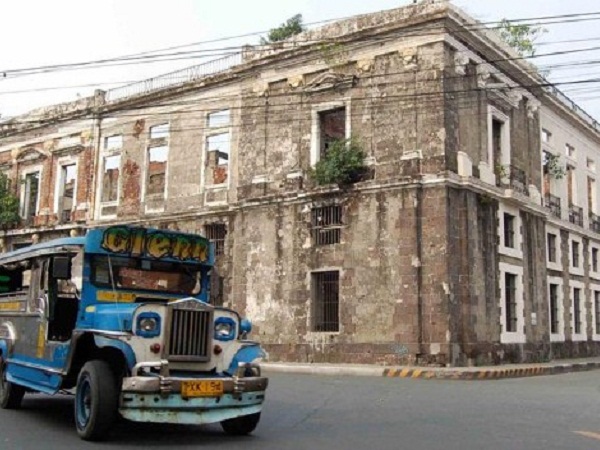
Peter Dallos shouts above the rumble of his smoke-belching engine urging passengers to clamber quickly on to his dilapidated red jeepney.
Such scenes may soon disappear from Manila’s gridlocked streets as authorities move to phase out the iconic World War II-era minibuses, citing pollution and safety concerns.
Dubbed ‘jeepneys’ and once hailed as the ‘King of the Road’ they are a cultural symbol in the Philippines to rival New York’s yellow taxis — and for decades they provided cheap and regular transport for millions.
But under a government modernization program, vehicles of this type that are aged 15 years or older will be taken off the streets by 2020 and replaced with a more environment-friendly version.
Dallos, 55, slaps the steering wheel as his slipper-clad foot stomps on the gas while he hands over change that is passed down a row of squished passengers fanning themselves in the summer heat.
“This is like my wife. My jeepney and I are together every day. I know what ails it, what I need to do,” Dallos told AFP.
“I’m angry because I will lose my job. I will be forced to go home to my province, become a bystander and starve,” he added.
The government admits the plan will be hard to implement, affecting a micro-industry of poor drivers and owners.
Dallos has been working 14 hours a day for 20 years to provide for his jobless wife, seven kids and three grandchildren who live in an upland farming province where he has no land to till. He earns around 500 pesos ($10) a day.
Dirty, inefficient, loved
Taking inspiration from the American jeeps left behind after the war, the jeepney is a Filipino invention, where a roof has been added and inside there are two parallel benches.
They can carry more than 20 people at a time, but run on cheap diesel and are heavy polluters, while the drivers are notorious for violating traffic rules.
“Our inefficient dinosaur, the (jeepney), must now be relegated to the museum. It is dirty, inefficient, unhealthy,” said Finance Secretary Carlos Dominguez.
The government vows to help owners sell old jeepneys and access loans to buy new models while requiring drivers to undergo safety training, though critics question the cost of this.
Authorities say commuters deserve a better alternative. They are designing units with engines compliant with European emission standards or solar and electric vehicles with GPS and possibly a ride-hailing app.
But at eight pesos (16 cents) per journey, jeepneys are the sole affordable option for many.
“It’s the only and the most convenient way. I can’t ride a taxi because that’s super expensive,” medical student Maria Alcid said en route to school.
For low fares, passengers pay the price of bumping their heads on the ceiling, inching their buttocks into seats, and clinging to the roof while standing on the tiny step at the back.
And yet for those who grew up riding jeepneys, there is a lot of affection for the vehicles.
They are famed for their psychedelic designs featuring everything from Mickey Mouse to the Virgin Mary and in provinces even carry people, animals and crops on roofs.
“Look at my jeepney, its frame is about to fall off but people are still riding it,” says Dallos, caressing his rusting dashboard. He adds: “Is there any other choice?” CBB












































